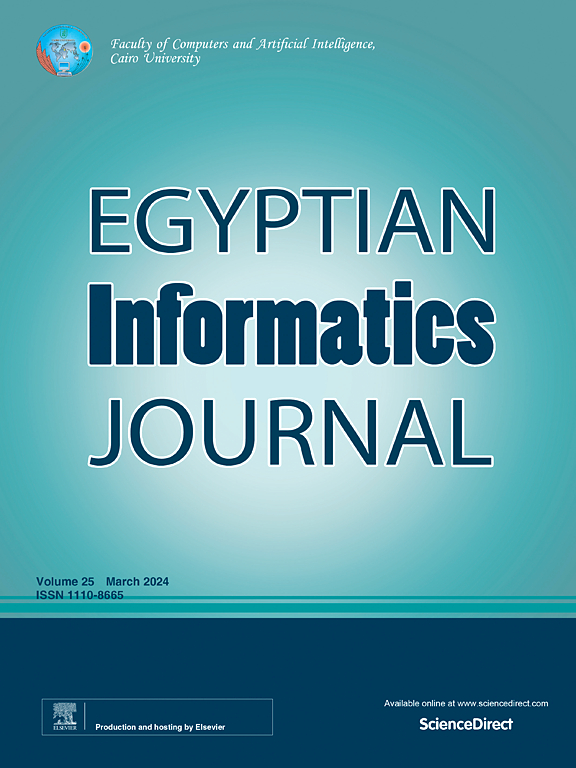Enhancing IoT security and healthcare data protection in the metaverse: A Dynamic Adaptive Security Mechanism
IF 4.3
3区 计算机科学
Q1 COMPUTER SCIENCE, ARTIFICIAL INTELLIGENCE
引用次数: 0
Abstract
In the rapidly evolving landscape of the Metaverse, the synergistic integration of the Internet of Things (IoT) and Digital Twins (DT) represents a revolutionary paradigm shift, seamlessly bridging the real and virtual worlds. While this innovative convergence offers unprecedented potential, it also exposes a broader spectrum of security vulnerabilities that challenge conventional approaches. This research aims to fortify the multifaceted ecosystem of the Metaverse, with a particular emphasis on securing IoT healthcare data. Ensuring the protection of health information within the extensive network of interconnected devices in the Metaverse is paramount. Addressing this critical need, we introduce the Dynamic Adaptive Security Mechanism (DASM), an advanced Artificial Intelligence (AI)-driven framework meticulously crafted to enhance security adaptively. DASM operates as a comprehensive and real-time defensive layer, continuously recalibrating its strategies to reinforce the security matrix for both IoT and Digital Twins. This study provides a detailed examination of the foundational architecture of DASM and its AI-driven adaptive processes. We elucidate its pivotal role in strengthening the security framework within the complex terrain of the Metaverse. Through rigorous testing and validation using the IoT healthcare security dataset, the Random Forest model emerges as the top performer, achieving near-perfect metrics, including a Matthews Correlation Coefficient (MCC) of 0.9989 and superior Balanced Accuracy, while also offering reduced training and inference times compared to the LSTM model. Although the LSTM model demonstrates strong accuracy, the ensemble approach of Random Forest balances computational efficiency and performance. The DASM framework sets a new benchmark in IoT security, offering a scalable and effective solution with significant implications for the future of Metaverse applications.
增强物联网安全和医疗数据保护:一种动态自适应安全机制
在快速发展的虚拟世界中,物联网(IoT)和数字孪生(DT)的协同集成代表了一种革命性的范式转变,无缝地连接了现实世界和虚拟世界。虽然这种创新的融合提供了前所未有的潜力,但它也暴露了挑战传统方法的更广泛的安全漏洞。这项研究旨在加强多维生态系统,特别强调物联网医疗保健数据的安全。确保在元宇宙中互联设备的广泛网络中保护健康信息是至关重要的。为了解决这一关键需求,我们引入了动态自适应安全机制(DASM),这是一种先进的人工智能(AI)驱动的框架,精心设计以自适应地增强安全性。DASM作为一个全面和实时的防御层,不断重新校准其策略,以加强物联网和数字孪生的安全矩阵。本研究详细介绍了DASM的基本架构及其人工智能驱动的自适应过程。我们阐明了它在加强元宇宙复杂地形中的安全框架方面的关键作用。通过使用物联网医疗安全数据集进行严格的测试和验证,随机森林模型成为表现最佳的模型,实现了近乎完美的指标,包括0.9989的马修斯相关系数(MCC)和卓越的平衡精度,同时与LSTM模型相比,还提供了更少的训练和推理时间。尽管LSTM模型具有很强的准确性,但随机森林的集成方法平衡了计算效率和性能。DASM框架在物联网安全方面树立了一个新的基准,提供了一个可扩展和有效的解决方案,对未来的元宇宙应用程序具有重要意义。
本文章由计算机程序翻译,如有差异,请以英文原文为准。
求助全文
约1分钟内获得全文
求助全文
来源期刊

Egyptian Informatics Journal
Decision Sciences-Management Science and Operations Research
CiteScore
11.10
自引率
1.90%
发文量
59
审稿时长
110 days
期刊介绍:
The Egyptian Informatics Journal is published by the Faculty of Computers and Artificial Intelligence, Cairo University. This Journal provides a forum for the state-of-the-art research and development in the fields of computing, including computer sciences, information technologies, information systems, operations research and decision support. Innovative and not-previously-published work in subjects covered by the Journal is encouraged to be submitted, whether from academic, research or commercial sources.
 求助内容:
求助内容: 应助结果提醒方式:
应助结果提醒方式:


